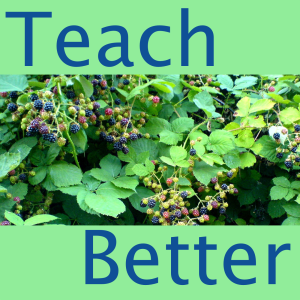
Podcast #15: Using Real Art and Artifacts in Your Teaching with Cyra Levenson and Matt Jacobson
 2015-08-24
2015-08-24
In this episode we talk with Cyra Levenson from the Yale Center for British Art and Yale Professor of American Studies, History, and African-American Studies, Matt Jacobson about incorporating real artifacts and works of art into your teaching. Specifically, we talk about why you might want to do such a thing, and how you can get started doing it.
You can subscribe to the Teach Better Podcast through your favorite podcast app or simply subscribe through iTunes if you don’t have one yet.
Show Notes0:00 ⏯ Intro
1:20 ⏯ How the British Art Center supports research and teaching as “new meaning-making.”
2:47 ⏯ Incorporating the embodied experience of being in front of an object: epiphanies and discoveries.
4:25 ⏯ The live lecture is “grounded cognition,” where the video lecture is not.
6:37 ⏯ Creating different kinds of knowledge.
8:05 ⏯ How artifacts can help clinicians learn about bias and clinical decision-making.
10:48 ⏯ Using cultural objects as a lens through which to see the politics of empire.
13:23 ⏯ Teaching U.S. history through 12 commodities.
15:22 ⏯ Using the same painting to teach different topics.
16:20 ⏯ Analyzing the museum as an institution.
16:46 ⏯ Humanistic teaching as trining in critical thinking: “moving slowly and consciously through it…thinking about it all the while.”
22:00 ⏯ Dermatologists look at British art: observation and description as transdisciplinary skills.
24:01 ⏯ Making a learning experience memorable.
27:18 ⏯ Doing public humanities by asking students to do projects with a real-world engagement. Students create an exhibition at the Institute Library about 100 years of the performing arts in New Haven.
31:16 ⏯ Guiding group projects which are “wide open”: they figure it out. Students stage a revolution in a seminar.
35:29 ⏯ Isolated students reproducing knowledge for a few people vs. groups making new knowledge for a wider audience.
36:30 ⏯ Why bother? What’s the payoff for loosely structured group projects?
39:27 ⏯ Using constraints and design thinking in higher ed humanities courses.
40:24 ⏯ Each student gets excited by something different. Giving up on “coverage” in favor of developing students’ skills and concerns.
45:09 ⏯ When learning is driven by the students’ needs for knowledge.
47:07 ⏯ Art collections on a university campus support disciplinary conversations. Learning to teach visually where images are no longer mere illustrations. Lecturing as dynamically curating.
51:19 ⏯ When music videos fall flat. Born in the USA: Bruce Springsteen vs. Stanley Clarke
54:35 ⏯ Teaching as improvisation.
More Episodes
Create your
podcast in
minutes
- Full-featured podcast site
- Unlimited storage and bandwidth
- Comprehensive podcast stats
- Distribute to Apple Podcasts, Spotify, and more
- Make money with your podcast
It is Free
- Privacy Policy
- Cookie Policy
- Terms of Use
- Consent Preferences
- Copyright © 2015-2024 Podbean.com





